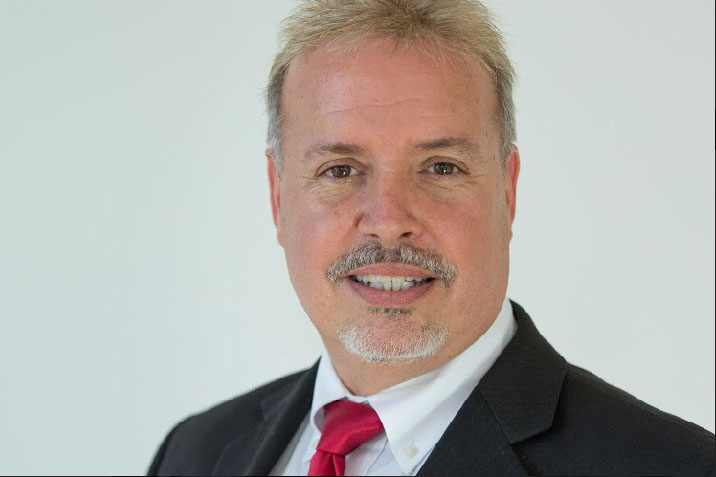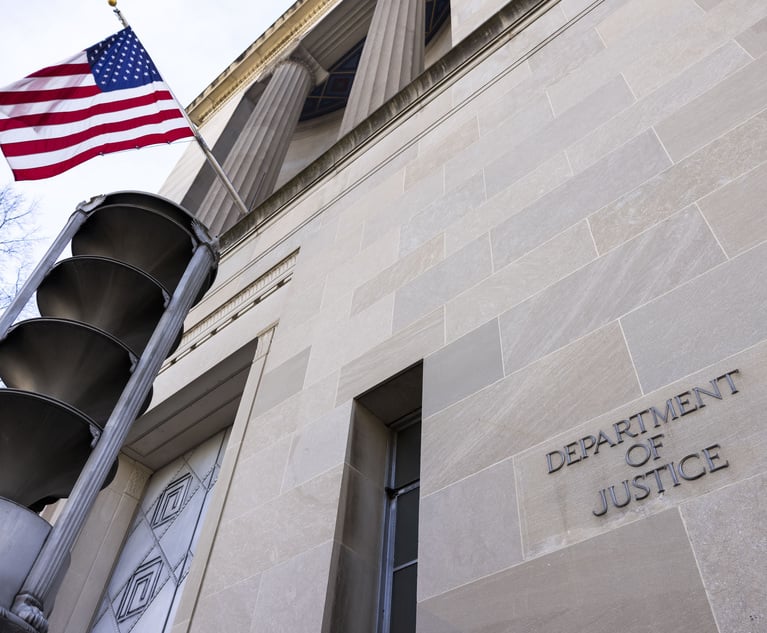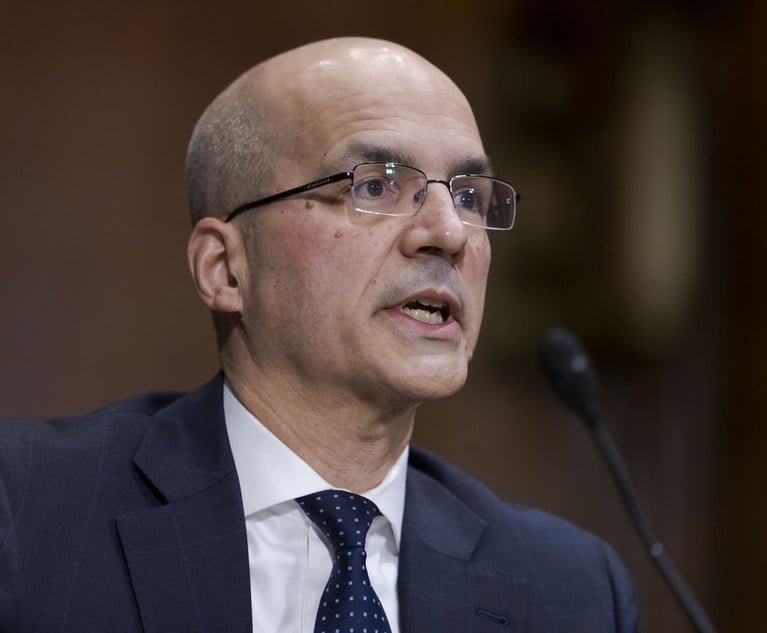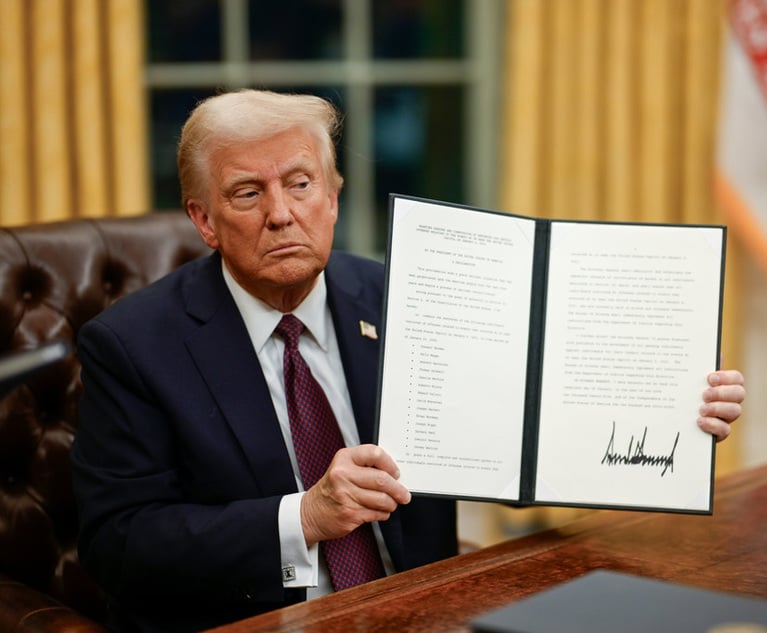Court of Appeals Reins in Excited Utterance Exception – A Little
Explaining to a client the excited utterance exception to the hearsay rule that permits the statement of a person who cannot be cross-examined at trial is embarrassing, and for them, often frightening.
September 10, 2018 at 03:24 PM
7 minute read
 Joseph D. Nohavicka
Joseph D. Nohavicka
The New York Court of Appeals, in People v. Cummings, has recently provided guidance as to just how far the excited utterance hearsay exception can go. The decision also provides helpful analysis on the application of the law-of-the-case doctrine regarding pre-trial evidentiary rulings.
But the actual question presented to the Cummings court was whether it was reasonably inferable from the circumstances that the anonymous speaker, heard in the background of the 911 call, personally observed a shooting. The court's inquiry was limited to whether there was record support for the trial court's admissibility ruling. The Court of Appeals found there was none.
Before getting into a discussion about the facts, reasoning, and doctrinal integrity of the Cummings decision, two important takeaways are presented in this discussion: the first is that a ruling on the admissibility of an excited utterance statement should be obtained on a full suppression hearing rather than in limine at trial. The reason is that the results of a suppression hearing generally cannot be reconsidered in the event of a change of judge for trial or that a new trial is necessary. You do not want to choose the option of trial without knowing as certainly as possible the precise evidence the fact-finder will be considering.
The second takeaway is this: A criminal defendant about to be confronted at trial with a recorded 911-call made anonymously, post-event, and identifying the defendant as a perpetrator is protected by one thing – time. With the lapse of time from the moment the event occurred until the statement is made, begins the inevitable decay of guarantees of trustworthiness. However, even before beginning a temporal attack on excited utterance statements, focus on whether the person making the statement post-event witnessed what it is they are reporting by establishing that personal observation is not reasonably inferable from the environmental circumstances. When a statement is made by a person without personal knowledge, temporal proximity is no longer relevant to that statement's admissibility.
The Facts of 'Cummings'
One afternoon, three men were on 129th Street and St. Nicholas Terrace in Manhattan when another man pointed a gun and shot at them, hitting one in the hand and leg, the second in the leg and the third in the buttocks. The gunman briskly got into a minivan, which sped off.
Within five minutes, a 911 call was made anonymously. About 20 seconds into the taped call, someone in the background on the 911 tape could be faintly heard saying, “Yo, it was Twanek, man! It was Twanek, man!”
A woman in the crowd provided the police with a partial license plate number for the minivan. An officer spotted and stopped a minivan matching the description and partial license plate a short distance from the crime scene, at which point both the driver and passenger exited the vehicle. The officer stayed with and arrested the driver, but the passenger — the suspected gunman — slipped away. Twanek's fingerprint was subsequently found on the passenger door of the minivan, and cell site data is consistent with his presence in the area at the time of the shooting. Also, Cummings left the state soon after the shooting, returning a few days later. No weapon was recovered, and the shooting victims failed to identify Cummings in a lineup. Surveillance video shows someone running away from the scene and entering the minivan immediately after the shooting, and several people hurrying towards the scene moments later. The surveillance video did not show the scene of the shooting.
Neither the shooter nor the person saying, “It was Twanek, man,” can be identified from the video. Twanek went to trial and was convicted anyway. Twanek's attorney appealed, arguing that the voice naming Twanek on the 911 tape should not have been admissible. The court agreed and Twanek was granted a new trial without the 911 tape. Anonymous 911 calls are admissible if the court can reasonably infer from the circumstances that the unidentified speaker heard on the 911 call personally observed what they are reporting. Take, for example, a crime in progress. In this case, the person heard in the background naming Twanek gave no indication that they saw anything at all.
Procedural History
At Cummings's first trial, the judge did not admit the 911 statement. The case ended in a mistrial. A new trial was set and the case was assigned to a new judge who also ruled against the admissibility of the statement. During jury selection, the second judge became ill and another judge took over. The prosecution renewed their application to have the statement admitted and this time they succeeded. Cummings was convicted. On appeal, Cummings argued that the law-of-the-case doctrine barred Judge 2 on Trial 2 from reconsidering the order denying admissibility by Judge 1, Trial 2. And Cummings argued that the statement should not have been admitted as an excited utterance. The Appellate Division affirmed the conviction denying those arguments. The Court of Appeals reversed and Cummings gets a new trial.
Excited Utterance Exception
Explaining to a client the excited utterance exception to the hearsay rule that permits the statement of a person who cannot be cross-examined at trial is embarrassing, and for them, often frightening. The extremely useful, though embryonic at the time of this writing, Guide to NY Evidence, restates the exception like this:
A statement about a startling or exciting event made by a participant in, or a bystander to, the event is admissible, irrespective of whether the declarant is available as a witness, provided the statement was made under the stress of nervous excitement resulting from the event and was not the product of studied reflection and possible fabrication.
Helping a client understand the exception in the context of a 911 call could go like this: Doe made the call as soon as they could after the event that they witnessed taking place. And now two things have to be established for that 911 tape to be admissible at trial: it must be proved that the caller personally saw the event; and, that the statement was made immediately after the event so that there was not enough time to either intentionally or unintentionally place blame on an innocent person.
Language in the Cummings decision helps: “To be sure, it must be inferable that the declarant had an opportunity to observe personally the event described in the [spontaneous] declaration.”
Judge Rivera, concurring, agreed that the Appellate Division properly reversed, calling for reconsideration of the justification for the excited utterance exception to the hearsay rule, writing: “Science, fact and common sense suggest that we should cabin, if not abandon, the exception.” The basis for Judge Rivera's sweeping and dramatic proposition, although articulated differently, is the same as many clients and students of the law have provided to this commentator – people lie; and they can lie quickly, although not necessarily with a nefarious motive. Judge Rivera penned, “Legal scholars and jurists have questioned the continued vitality of this exception, in light of advances in psychology and neuroscience that demonstrates an individual's inability to accurately recall facts when experiencing trauma, and, in turn, to create falsehoods immediately.”
Although the Cummings decision may not create new law, it is a powerful reminder that there is precedent available to prevent unfairness caused by untrustworthy evidence.
Joseph Nohavicka is a partner at Pardalis & Nohavicka.
This content has been archived. It is available through our partners, LexisNexis® and Bloomberg Law.
To view this content, please continue to their sites.
Not a Lexis Subscriber?
Subscribe Now
Not a Bloomberg Law Subscriber?
Subscribe Now
NOT FOR REPRINT
© 2025 ALM Global, LLC, All Rights Reserved. Request academic re-use from www.copyright.com. All other uses, submit a request to [email protected]. For more information visit Asset & Logo Licensing.
You Might Like
View All
'A Shock to the System’: Some Government Attorneys Are Forced Out, While Others Weigh Job Options
7 minute read
'Serious Legal Errors'?: Rival League May Appeal Following Dismissal of Soccer Antitrust Case
6 minute read
How Some Elite Law Firms Are Growing Equity Partner Ranks Faster Than Others
4 minute read
Trending Stories
Who Got The Work
J. Brugh Lower of Gibbons has entered an appearance for industrial equipment supplier Devco Corporation in a pending trademark infringement lawsuit. The suit, accusing the defendant of selling knock-off Graco products, was filed Dec. 18 in New Jersey District Court by Rivkin Radler on behalf of Graco Inc. and Graco Minnesota. The case, assigned to U.S. District Judge Zahid N. Quraishi, is 3:24-cv-11294, Graco Inc. et al v. Devco Corporation.
Who Got The Work
Rebecca Maller-Stein and Kent A. Yalowitz of Arnold & Porter Kaye Scholer have entered their appearances for Hanaco Venture Capital and its executives, Lior Prosor and David Frankel, in a pending securities lawsuit. The action, filed on Dec. 24 in New York Southern District Court by Zell, Aron & Co. on behalf of Goldeneye Advisors, accuses the defendants of negligently and fraudulently managing the plaintiff's $1 million investment. The case, assigned to U.S. District Judge Vernon S. Broderick, is 1:24-cv-09918, Goldeneye Advisors, LLC v. Hanaco Venture Capital, Ltd. et al.
Who Got The Work
Attorneys from A&O Shearman has stepped in as defense counsel for Toronto-Dominion Bank and other defendants in a pending securities class action. The suit, filed Dec. 11 in New York Southern District Court by Bleichmar Fonti & Auld, accuses the defendants of concealing the bank's 'pervasive' deficiencies in regards to its compliance with the Bank Secrecy Act and the quality of its anti-money laundering controls. The case, assigned to U.S. District Judge Arun Subramanian, is 1:24-cv-09445, Gonzalez v. The Toronto-Dominion Bank et al.
Who Got The Work
Crown Castle International, a Pennsylvania company providing shared communications infrastructure, has turned to Luke D. Wolf of Gordon Rees Scully Mansukhani to fend off a pending breach-of-contract lawsuit. The court action, filed Nov. 25 in Michigan Eastern District Court by Hooper Hathaway PC on behalf of The Town Residences LLC, accuses Crown Castle of failing to transfer approximately $30,000 in utility payments from T-Mobile in breach of a roof-top lease and assignment agreement. The case, assigned to U.S. District Judge Susan K. Declercq, is 2:24-cv-13131, The Town Residences LLC v. T-Mobile US, Inc. et al.
Who Got The Work
Wilfred P. Coronato and Daniel M. Schwartz of McCarter & English have stepped in as defense counsel to Electrolux Home Products Inc. in a pending product liability lawsuit. The court action, filed Nov. 26 in New York Eastern District Court by Poulos Lopiccolo PC and Nagel Rice LLP on behalf of David Stern, alleges that the defendant's refrigerators’ drawers and shelving repeatedly break and fall apart within months after purchase. The case, assigned to U.S. District Judge Joan M. Azrack, is 2:24-cv-08204, Stern v. Electrolux Home Products, Inc.
Featured Firms
Law Offices of Gary Martin Hays & Associates, P.C.
(470) 294-1674
Law Offices of Mark E. Salomone
(857) 444-6468
Smith & Hassler
(713) 739-1250






